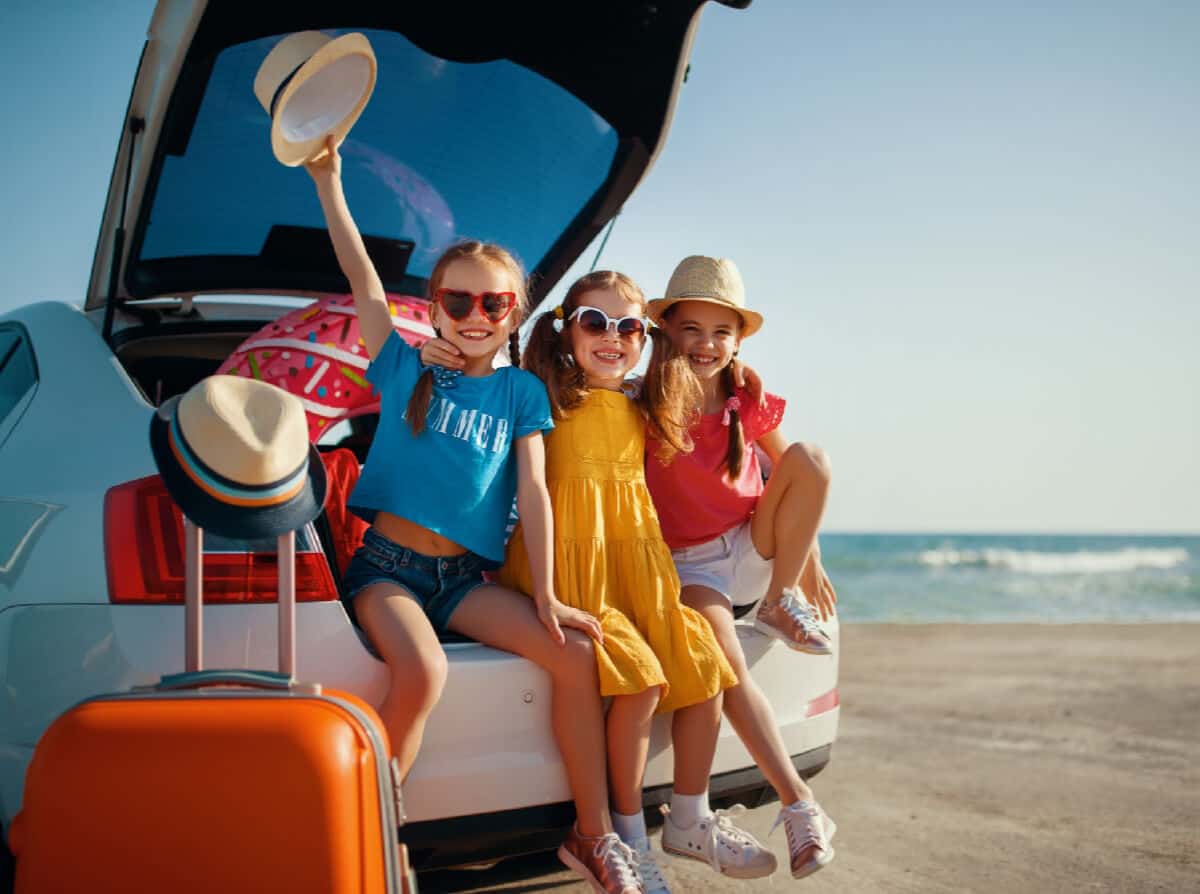

Pack a large resealable plastic bag for her to use, if you're lucky enough to get a heads up, plus a spare change of clothes (for both of you), wipes and air freshener to tackle any messes. Keep in mind, though, that sometimes your toddler won't be able to give you much (or any) advance warning that motion sickness is about to strike. If that doesn't help, try to pull over so she can get out, stretch her legs and have a bland snack (like crackers). If you sense that your sweetie is starting to feel nauseous, crack the windows and encourage her to look out the window instead of focusing on her toys or books. Alternating who’s at the wheel won’t just keep things interesting for the grown-ups it’ll also make the trip more exciting for your toddler who will get a kick out of the change in playmates. If you’re traveling with another caregiver, take turns being in the backseat with your toddler. You don't want to blow through your entire stash within half an hour. Give your child one toy, activity or snack at a time, to eke out as much entertainment from each item as possible before moving onto the next item. Unfamiliar toys will keep your tot occupied for longer than the stuff she's used to playing with.Īlso, a pro tip: Avoid anything with small pieces that could easily fall under the seat, lest you enjoy pulling over to scrounge for individual Lego bricks or doll shoes. Consider borrowing some items from parent friends, if you can. %hink finger and hand puppets, crayons, toddler books and miniature music-making toys (if the noise won't drive you crazy). Playthings that she can easily manipulate herself and that will hold her attention for long stretches are preferred. But at some point she'll likely get antsy, and when she does, you'll want to be prepared with toys and activities - lots of them.

Your sweetie might be content to gaze out the window at the scenery for a little while. It'll take a little extra planning up front, but it's worth it to avoid having to drive an extra hour to the nearest motel.


Speaking of stopping, figure out where along your drive you'll pull over for meals and snacks, playtime, bathroom breaks and overnight rest. Encourage him to stretch his legs and burn off some energy with a toy ball (where it’s safe to play) or a quick game of follow-the-leader. So if it’s needed (and if you can spare the time and money), allow for an overnight stop to space out the trip.Īnd no matter how far or how long the drive, be prepared to stop frequently - every two hours or so - during toddler car travel to give your pint-sized passenger a chance to walk and play at rest stops. When taking on a long-distance car trip with your little one, hitting the road for two separate six-hour bursts could beat a marathon drive. The stop-and-go will only add time - and unnecessary stress - to your trip. Very early in the morning or after bedtime are often your best bet.ĭriving during naptime might work too, but you may want to steer clear if there's a chance you'll hit rush hour traffic. Try to hit the road at a time when your tot will hopefully fall asleep for at least some of the journey. Oh, and planning to drive when there's a chance your toddler could fall asleep! Consider your departure time In a nutshell? Successful toddler car trips involve making plenty of stops and bringing more playthings and snacks than you think you'll need. Tips for taking a road trip with a toddler Here's everything you need to know, what you'll want to bring and the toddler road trip mistakes to avoid. From figuring out the ideal time to leave, to picking out the best places to stop, to loading up on all the exciting toys and plenty of snacks, you'll make the journey easier and more enjoyable for all by prepping ahead.


 0 kommentar(er)
0 kommentar(er)
